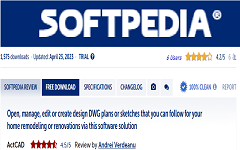Loading and running LISP Program:
In ActCAD, you can run your own programs written in several programming languages such as LISP, VBA, ADS, etc. Additionally, ActCAD supports the LISP programming language and is compatible with many AutoCAD third-party programs, including those written entirely in AutoLISP without any modification needed
To load a LISP routine
1. Choose Tools > Load LISP or SDS Application. Type Appload and then press Enter. Drag and drop the LISP file into ActCAD.

Application File List Displays the current list of application files. A green check mark indicates that an application file is already loaded.
Add File Adds a file name to the list. Select the IRX, DRX, LSP, MNL, or DLL file, and then click Open to add the file name to the list. Adding files does not mean that they will be automatically loaded in the program.
Remove File Removes a file name from the list. Select the file name, and then click Remove File. The program does not warn you that the file will be removed from the list.
Startup Suite Click to open the Startup Suite dialog box and specify the custom applications to be loaded each time you start the program. Another way to automatically load applications is using scripts, see Use a script to load applications automatically.
Add to Suite Click to add selected files from the Application File List to the startup suite.

List of Applications Displays the current list of custom applications to load each time you start the program.
Add Click to add an application file to the list. In the dialog box that opens, select the desired file, and then click Open.
Remove Click to remove the selected application file from the list. The application file is not removed from the computer.
Move Up Click to move the selected application file up one position in the list.
Move Down Click to move the selected application file down one position in the list.
Load Loads the application into IntelliCAD memory. Select the file name, and then click Load. The program does not begin running automatically. Refer to the instructions that accompany the program.
Unload Unloads the application from IntelliCAD memory. Select the file name, and then click Unload.
Save Updates Keeps a list of the applications that you load and uses the list for the next time you open the drawing. Uncheck the box to turn it off and not keep the list of loaded applications with the drawing.
2. In the Load Application Files dialog box, click Add File.
3. Select the LISP file that you want to load, and then click Open.
4. Click OK.
To run a LISP routine:
1. Choose Tools > Load LISP or SDS Application. Type Appload and then press Enter.
In the Load Application Files dialog box, select the routine you wish to run, ensuring that it is the only one selected, and then click on Load. Some LISP routines can be executed by directly typing the routine name or keyword in the command bar. If the LISP routine does not run when selected from the Load Application Files dialog box, turn on the display of the command bar or Prompt History window by selecting View > Command Bar or View > Prompt History Window. Look for an entry similar to the following: 'Loading D:\path\routine.lspC:KEYWORD.








